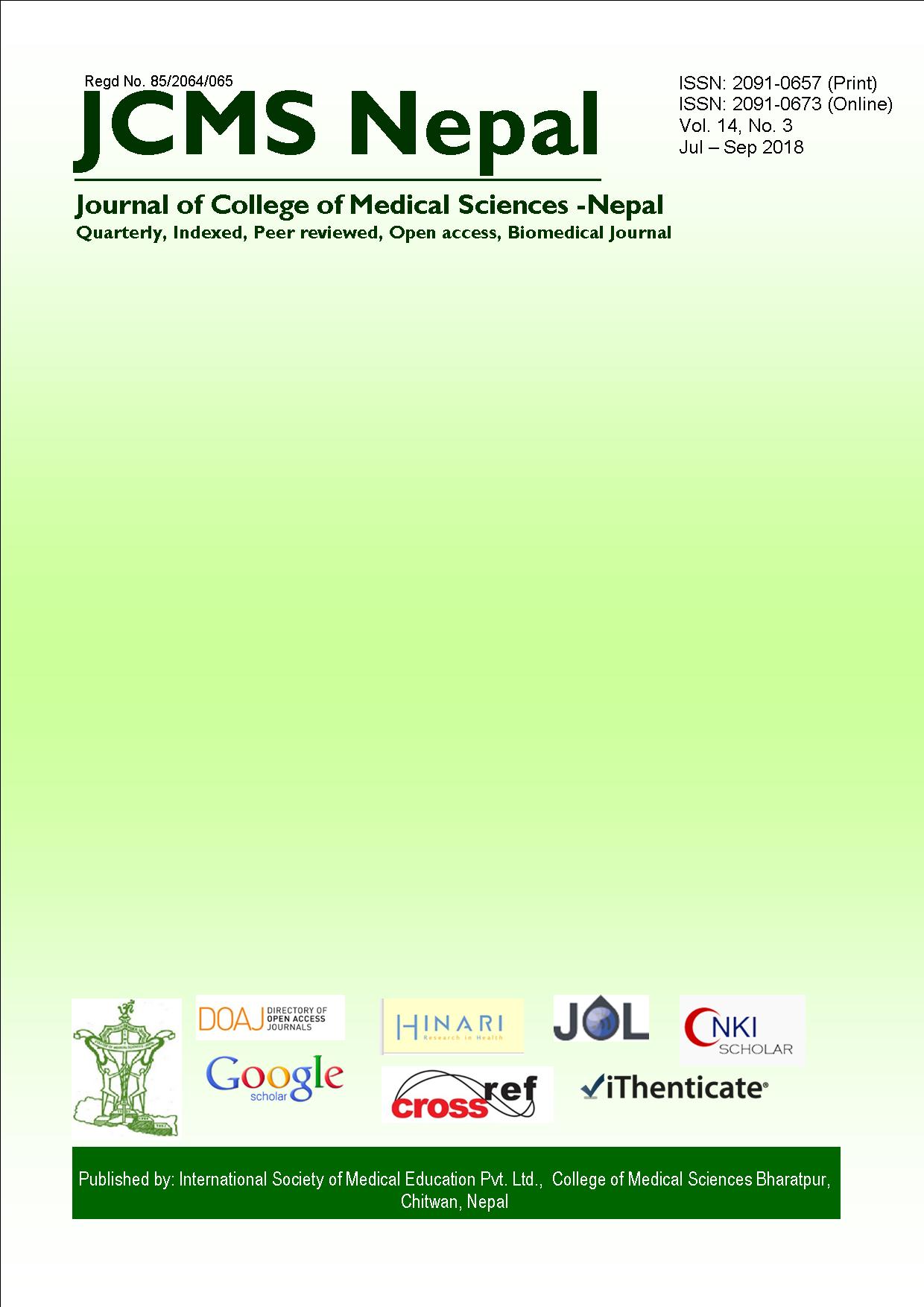A Comparative Study Between Two Different Doses of Dexmedetomidine Combined with Ropivacaine in Ultrasound Guided Supraclavicular Brachial Plexus Block
DOI:
https://doi.org/10.3126/jcmsn.v14i3.20908Keywords:
Dexmedetomidine, Ropivacaine, Supraclavicular brachial plexus blockAbstract
Background: Though, various studies have been conducted to show the efficacy of dexmedetomidine as an adjuvant to brachial plexus block, there is no clear consensus for its optimal dose. We compared 2 different doses of dexmedetomidine (1mcg/kg Vs 2mcg/kg) with ropivaciane in USG guided brachial plexus block for the quality of anesthesia and analgesia. Materials and Methods: Fifty patients (18-50years, 50-60kgs), ASA PS I and II undergoing surgery of upper limb were enrolled in this prospective, double blind, randomized control trial. Group Rd received 19ml of 0.5% Ropivaciane with 1mcg/kg of dexmedetomidine (total 20ml), and Group RD received 19ml of 0.5% Ropivacaine with 2mcg/kg of dexmedetomidine (total 20ml). Onset and duration of sensory and motor block, duration of analgesia, sedation score, hemodyanamic changes were compared. We also monitored for various un towards effects. Results: The onset time of sensory and motor block (9.36±1.114 mins and 14.40 ± 1.528 mins in group Rd vs 8.32 ±0.945 mins and 12.40 ± 1.21 mins in group RD) were not significantly different between two groups (p-value > 0.05).The duration of sensory and motor block (596.20 ± 76.859 mins and 541.20±81.564 mins in group Rd vs 730.80 + 65.187 mins and 659.80±93.607 mins in group RD) were not significantly longer in group RD than group Rd (p-value > 0.05). The duration of analgesia (626.00±70.475 mins in group Rd vs 754.00±60.139 mins in group RD) were not significantly longer in group RD than group Rd (p-value > 0.05). Hemodynamic parameters were also comparable between two groups (p-value >0.05) but 3 patients in RD group (2mcg/kg) developed bradycardia and required treatment with atropine whereas in Rd group (1mcg/kg) none developed bradycardia. Conclusions: There is no significant difference in the onset and duration of block between the two groups. However, higher dose of dexmedetomidine is associated bradycardia. Hence, in comparision with 2mcg/kg, 1mcg/kg of dexmedetomidine is better adjuvant to 0.5% ropivaciane in terms of safety and effectiveness.
Keywords: dexmedetomidine; ropivacaine; supraclavicular brachial plexus block.
Downloads
Downloads
Published
How to Cite
Issue
Section
License
This license enables reusers to copy and distribute the material in any medium or format in unadapted form only, for noncommercial purposes only, and only so long as attribution is given to the creator.




